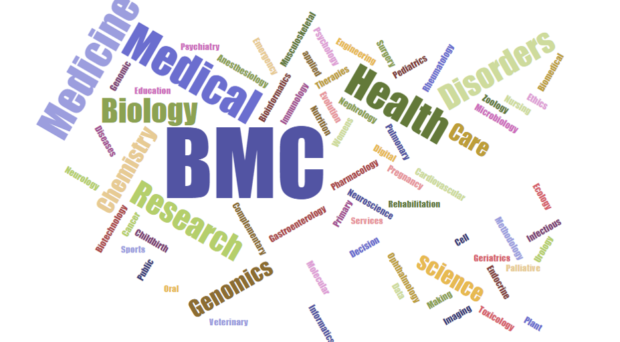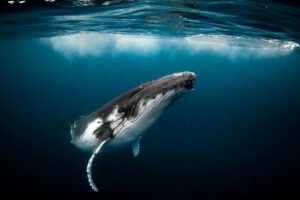
BMC Health Services Research – Understanding the difference, makes the difference: perceptions of Black and Minoritised ethnic occupational therapists on mentoring

Although mentoring only became popularized over the last two decades of the twentieth century, the history of mentoring can be traced back to Ancient Greece. The word “mentor” originates from the character Mentor, the adviser of Telemachus in Homer’s Odyssey. As a prevailing tool for self-development, understanding the impact of mentoring is essential.
In the United Kingdom, career advancement for Black and Minoritized Ethnicity (BME) occupational therapists is limited and little is known about the perceptions of BME therapists on the role of mentoring for their career. In an effort to better understand, this study published in BMC Health Services Research utilized the principles of Participatory Learning and Action research methodology. The absence of BME role models in occupational therapy was identified as one of the crucial factors hindering career achievement. Needless to say, building a solid foundation of mentoring relationships is critical within cross race mentoring. The research highlighted the importance of trust and allyship at the initial stages of a mentoring process to secure compatible mentee-mentor pairing. The researchers propose the establishment of a mentoring charter, akin to the Athena SWAN model, for BME healthcare workers to ensure equitable support.
A one-size-fits-all approach should not be assumed for mentoring. These findings can serve as encouragement to enhance support and access to career mentorship for health professionals of minority backgrounds.
BMC Ecology and Evolution – Patterns of enrichment and acceleration in evolutionary rates of promoters suggest a role of regulatory regions in cetacean gigantism

Marine mammals in the cetacean family include whales, dolphins and porpoises. Earning the title as the largest animal on earth, the blue whale (Balaenoptera musculus) sits in the cetacean family among many other giants. But why are whales so big? Ecological hypotheses of cetacean gigantism have been put forward, including thermoregulation, food acquisition and wider space in the aquatic environment to explore. However, the genetics involved in body size regulation in these ocean giants, remain under-explored.
This study published in BMC Ecology and Evolution, explored the molecular evolution of gene regulatory regions associated with cetaceans’ gigantism, particularly the promoter region. The study utilized sequences from 13 species of cetaceans and 39 other non-cetacean species to represent the major mammalian groups. The researchers discovered enrichment of transcription factors binding sites linked to a large body size with distinct patterns in the promoters of IGFBP7 and NCAPG between giant and non-giant cetaceans. Most importantly, evidence of accelerated evolution in the IGF2, IGFBP2, IGFBP7, and ZFAT promoters were detected.
Science is a step closer to understanding the regulatory mechanisms responsible for the remarkable size of certain species, paving the way to further research with broader implications for the fields of evolution, biomedical research and conservation.
BMC Complementary Medicine and Therapies – Equine-assisted therapy effectiveness in improving emotion regulation, self-efficacy, and perceived self-esteem of patients suffering from substance use disorders

Addiction is a complex condition with psychological, biological and social determinants at play. The interplay of these elements contributes to the persistence of recurring addictive behaviors. The use of complementary therapies, such as equine-assisted interventions for the management of substance use disorders (SUD) have gained recent exposure.
In this randomized clinical trial published in BMC Complementary Medicine and Therapies, 100 adults diagnosed with SUD were recruited and randomized into two groups: an equine-assisted therapy intervention group and a control group. The intervention group received weekly equine-assisted therapy lasting 40-60 minutes for 6 weeks which did not involve horse riding, but might involve leading the horse from one spot to another, grooming or feeding. The research demonstrated that equine-assisted therapy led to significant improvements in SUD patients’ emotional regulation scales, general self efficacy and self-esteem scores.
Employing a holistic approach to treatment of adults with SUD can provide long-term benefits to the individuals. This study shines light on the potential of equine-assisted therapy as complementary therapy for enhancing mental health outcomes in SUD patients, offering a fresh perspective in the field.
This paper is part of a collection of articles focusing on ‘Animal-assisted interventions for mental health’ published in BMC Complementary Medicine and Therapies. To find out more, visit https://www.biomedcentral.com/collections/APATAP.
BMC Genomics – Genetic influences on alcohol flushing in East Asian populations

Colloquially known as the ‘Asian glow’, more than one in three people with East Asian heritage experience redness (flushing) on their skin when consuming alcohol. A type of alcohol intolerance, flushing occurs predominantly due to inherited deficiency in enzymes responsible for metabolizing alcohol efficiently: aldehyde dehydrogenase 2 (ALDH2) and aldehyde dehydrogenase 1B (ADH1B).
In this BMC Genomics paper, researchers from the United Kingdom, China and South Korea collaborated to perform the largest genome-wide association study of alcohol flushing to date. Powered by data from 15,016 male individuals of East Asian ancestry, SNP-based heritability analyses from the study estimated that around 13% of the phenotypic variation in flushing can be attributed to common genetic variants. Importantly, the study identified ADH1B-rs1229984 having robust association with alcohol flushing, supporting its previously reported role in alcohol consumption phenotypes.
Beyond genetics, the study provided insight into how self-reported alcohol flushing could serve as a valuable instrument for measuring alcohol consumption. This study advances our understanding on how our genes play a crucial yet intricate role in our responses to alcohol, carrying significant implications for interventions addressing alcohol-related health and broader public health strategies.
BMC Women’s Health – Breast cancer treatment and recovery: pets’ roles as emotional buffers and stressors
As one of the most common cancers in women, being diagnosed with breast cancer carries physical, psycho-social and spiritual distress to the individual and their support system. Sometimes, that support system extends beyond humans, and may come in the form of a companion animal.

In this survey study published in BMC Women’s Health, researchers delved into the often-overlooked relationship between breast cancer patients and their companion animals. The majority of participants in the study shared that their pets provide a great deal of support. Compared to the other three sub-types of support (emotional, social and tangible), affectionate support was rated the highest, with approximately 80% of participants reported feeling loved and needed by their companion pets most or all of the time.
Despite the remarkable benefits a companion pet brings, half of the participants shared that their veterinarians or oncologists were not fully supportive, potentially due to concerns of zoonotic risks. ‘Parental’ worries surrounding their pets include the worry of a suitable caregiver for their pets in case they are no longer able to care for them, and the guilt of not being able to provide the best care for their pets, all which are predictors of lower quality of life.
More than 90% of pet owners see their animal companion as a part of their family. Opening up dialogues with patients, and considering companion animals in psycho-social support and care planning in the initial months following a cancer diagnosis, may aid in alleviating the distress cancer patients may face in trying to meet their pets needs.
Comments